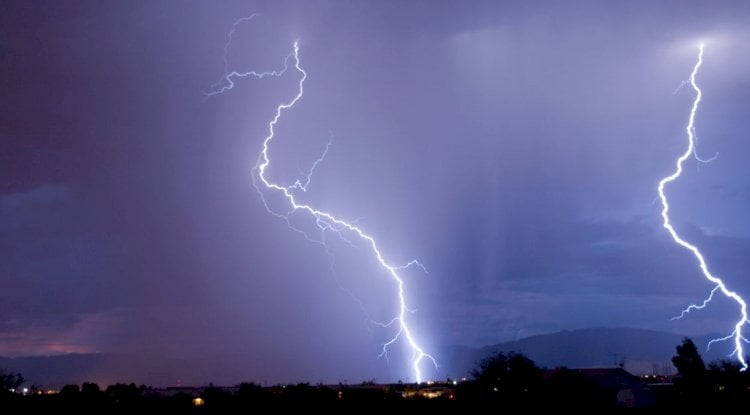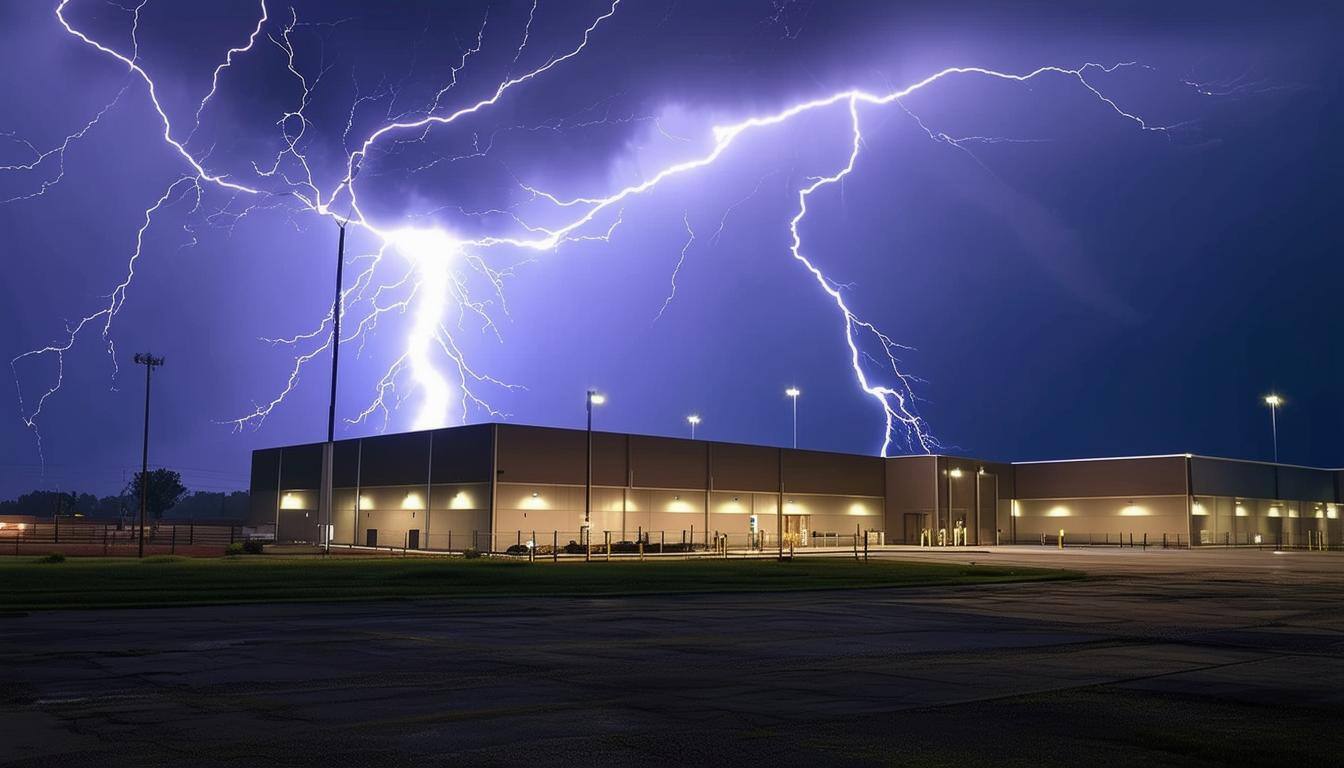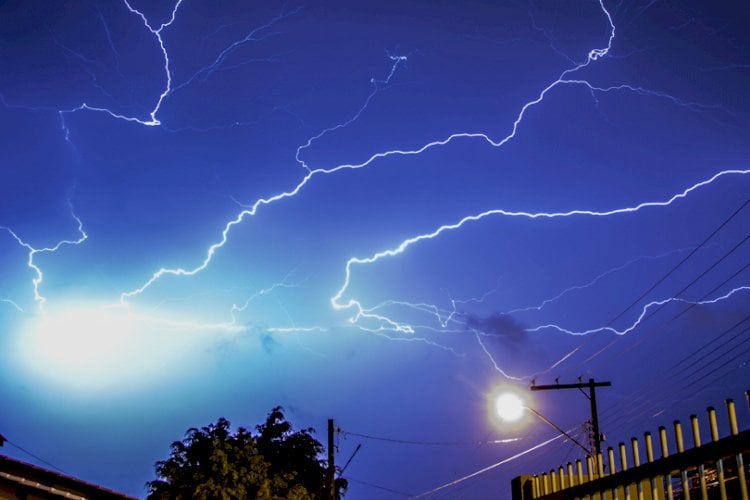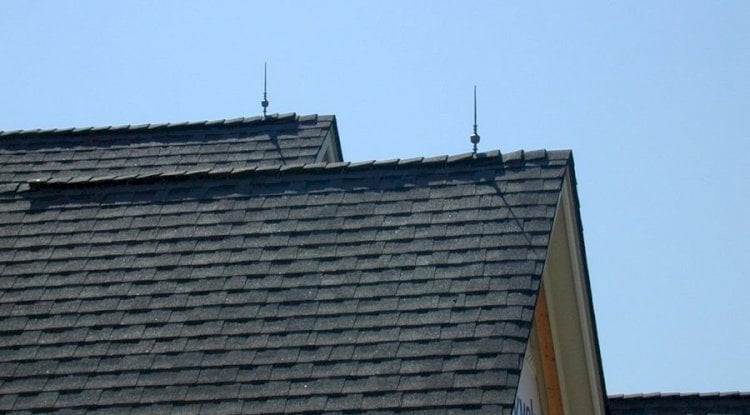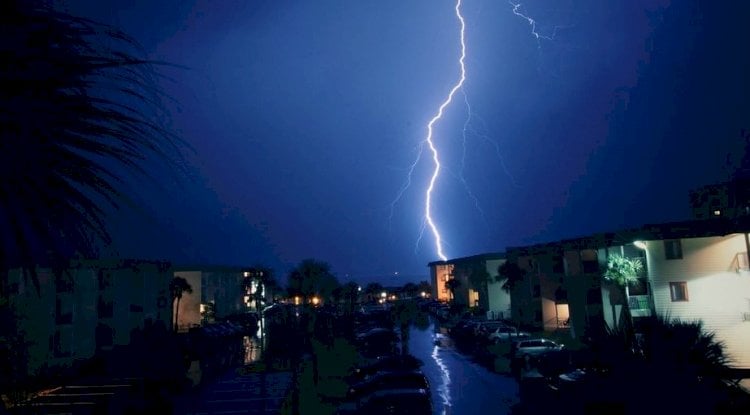Kevin asked:
What are the lightning protection standards for lightning down conductor installation?
Our Answer:
There are actually two (2) standards you will want to look at, the NFPA 780 but also the UL96A standard which provides the Master Label certification program for lightning protection systems. Here are the requirements from UL96A:
Lightning conductors do not fall into the basic wire size categories, as most field electricians know them
Class I- main conductors:
- Stranded copper conductors shall be at least 57,400 circular mils at 187 lbs per 1000 ft. Aluminum conductors shall be at least 98,600 cir.mils at 95 lbs per 1000 ft.
- Secondary or bonding conductors the minimum size shall be 26,240 cir. mils for copper and 41,100 cir. mils for aluminum
Class II- main conductors:
- Shall be not less than 115,000 cir. mils for copper conductor at 375 lbs per 1000 ft and, 192,000 cir. mils. for aluminum conductors at 190 lbs per 1000 ft.
- Secondary or bonding conductors the minimum size shall be 26,240 cir. mils for copper and 41,100 cir. mils for aluminum.
Lightning conductors have their own wire sizing categories
Please note the very first statement from the UL96A, in that lightning conductors have their own wire sizing categories. This is mostly due to the requirement to “weave” or “braid” the strands together so that these typically non-insulated conductors do not un-wind under gravity weight over time. That said, you are correct in that a 2/0 wire meets the circular mil requirements. However, “concentric” wire is typically only installed horizontally. You will want to purchase woven or braided lightning conductor wire for your vertical installations. To be honest, its best to use some form of braided or woven wire for your main lightning conductors throughout your Lightning Protection System, and solid for you secondary bonding.
Sorry to be the bearer of bad news, as we are aware that lighting-grade braided conductors can be far more costly than regular concentric conductors. But, we have seen what happens when concentric wire unwinds overtime, and it is not good. As I am sure you are aware, E&S Grounding Solutions has no products to sell you. We only provide Lighting Risk Assessments, Rolling Sphere Studies, Frequency/Time Domain Analysis, and other engineering/consulting services, so we have no “horse in the race” when it comes to making product recommendations.
Also, remember that you may not bring aluminum conductors (really, anything aluminum) within 18-inches of the earth under UL96A Part 4, NFPA 780 Chapters 4.2.2.3.1 and 4.5.2.2, and NEC Articles 250.52(B)(1), 250.64(A), 250.120(B), and 680.21(A)(1).
Note: We have recently received a number of inquiries regarding Early Streamer Emission (ESE) systems and their derivatives. These systems are NOT authorized under NFPA780, UL96A, IEEE 998, or IEC 62305. These systems do not work as advertised and have unfortunately lead to the known deaths of several persons. Only “Franklin” style lightning protection systems should be used.
The Engineering Experts at E&S Grounding Solutions

